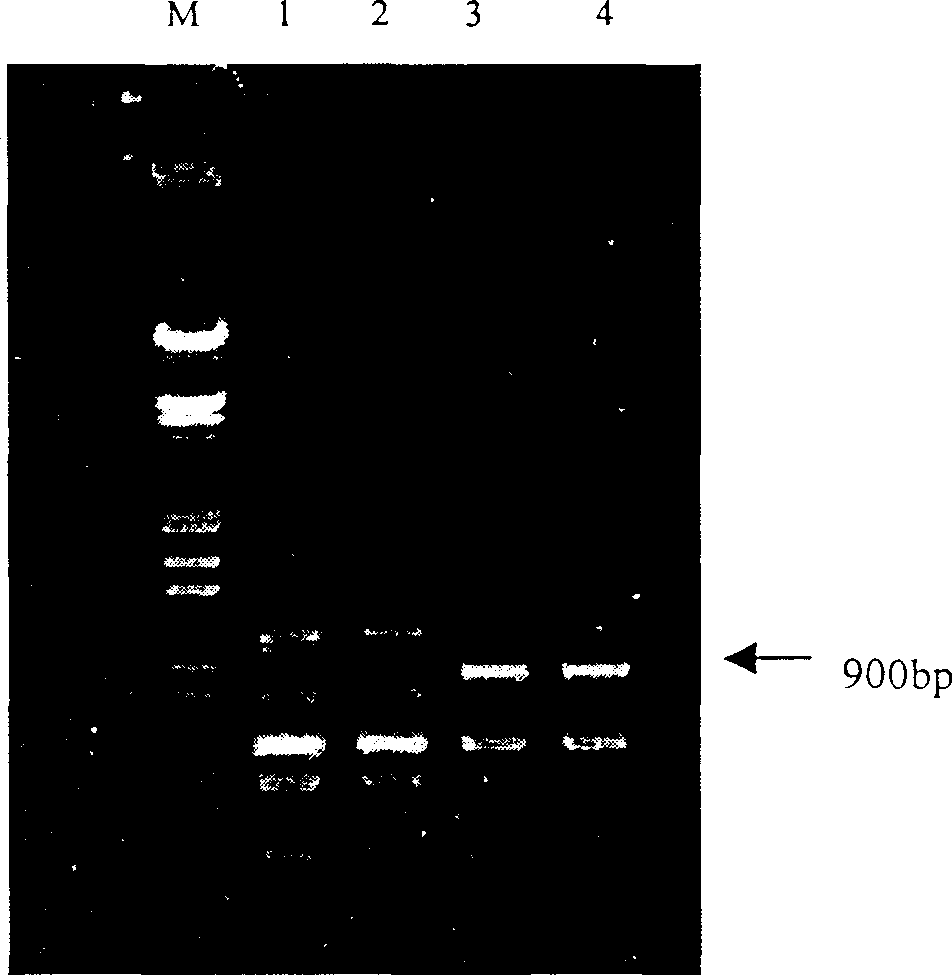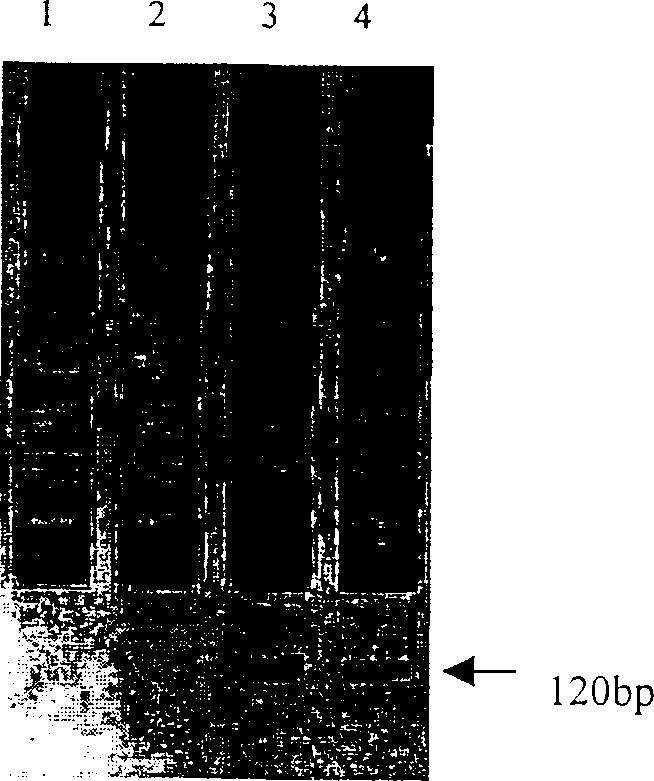Molecular marker linked with wheat mildew-resistance gene
A powdery mildew resistance gene and molecular marker technology, applied in the field of agricultural biotechnology engineering, can solve the problem of resistance gene loss of function
- Summary
- Abstract
- Description
- Claims
- Application Information
AI Technical Summary
Problems solved by technology
Method used
Image
Examples
Embodiment 1
[0041] Example 1: Using the RAPD molecular marker method, a new molecular marker OPP15 linked to the wheat powdery mildew resistance gene was obtained 900 .
[0042] The specific method is: the parent of the disease-resistant gene donor is from the British common wheat variety Brock, and it is crossed with the susceptible common wheat parent 015 and the susceptible parent Jing 411. The hybrid combination is "Brock / 015 / / Jing 411", and the resistant list 92 BC strains were obtained from high-generation lines with stable resistance to powdery mildew through crossing, backcrossing and selfing 2 f 5 ;
[0043] 1. Extract DNA:
[0044] Take 0.2 g of wheat leaves, grind them into powder in liquid nitrogen, quickly add DNA extraction buffer (50mM Tris-HCl, pH8.0; 20mM EDTA, pH8.0; 50mM NaCl), incubate at 65°C for 15 minutes, and mix them by inversion 2-3 times, 0 ℃ ice bath for 10 minutes. Centrifuge at 3,000 rpm for 10 minutes, take the supernatant, add an equal volume of Tris-H...
Embodiment 2
[0058] Example 2: Using the SSR molecular marker method, a new molecular marker Xgwm114 linked to the wheat powdery mildew resistance gene was obtained 120 .
[0059] Plant material is with embodiment 1, and concrete way is as follows:
[0060] 1. Extract DNA:
[0061] Take 0.2 g of wheat leaves, grind them into powder in liquid nitrogen, quickly add DNA extraction buffer (50 mM Tris-HCl, pH 8.0; 20 mM EDTA, pH 8.0; 50 mM NaCl, incubate at 65 ° C for 15 minutes, and mix them by inversion 2-3 times, ice bath at 0°C for 10 minutes. Centrifuge at 3000 rpm for 10 minutes, take the supernatant, add an equal volume of Tris-HCl (pH8.0) saturated phenol, invert and mix well, and centrifuge at 3000 rpm for 10 minutes Take the supernatant, add an equal volume of phenol, chloroform and isoamyl alcohol (25:24:1) to extract, mix upside down, and centrifuge at 3000 rpm for 10 minutes. Take the supernatant, add an equal volume of chloroform, mix upside down Evenly, centrifuge at 3000 rpm ...
PUM
 Login to View More
Login to View More Abstract
Description
Claims
Application Information
 Login to View More
Login to View More - R&D
- Intellectual Property
- Life Sciences
- Materials
- Tech Scout
- Unparalleled Data Quality
- Higher Quality Content
- 60% Fewer Hallucinations
Browse by: Latest US Patents, China's latest patents, Technical Efficacy Thesaurus, Application Domain, Technology Topic, Popular Technical Reports.
© 2025 PatSnap. All rights reserved.Legal|Privacy policy|Modern Slavery Act Transparency Statement|Sitemap|About US| Contact US: help@patsnap.com



